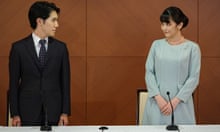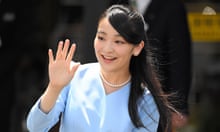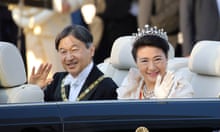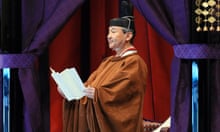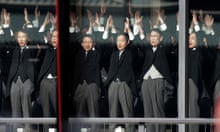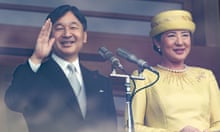Japan’s Emperor Akihito will abdicate in spring 2019, almost three years after he suggested his age and health were affecting his ability to carry out his official duties.
The 83-year-old will officially retire on 30 April 2019 in the first abdication by a Japanese emperor for 200 years. His eldest son, Crown Prince Naruhito, will become the 126th occupant of the chrysanthemum throne the following day.
ProfileCrown Prince Naruhito
Show
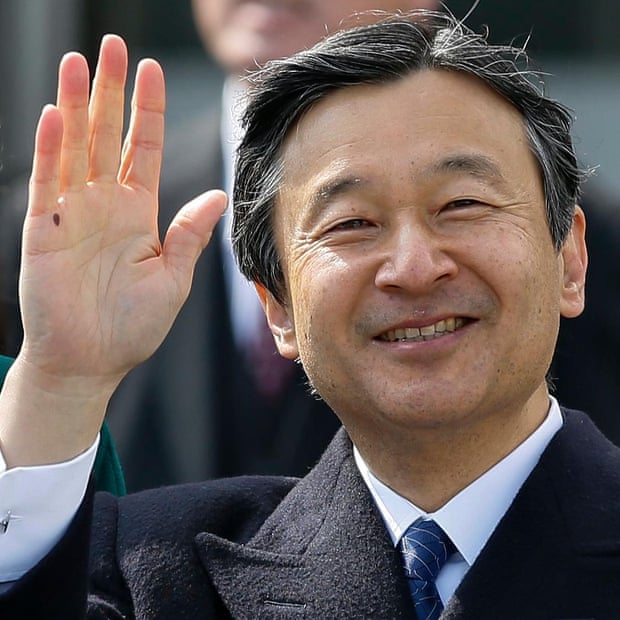
Crown Prince Naruhito
Naruhito will become the 126th occupant of Japan's chrysanthemum throne in April 2019, the day after his father, Akihito, retires.
Now 57, Naruhito attended Gakushuin, an elite school in Tokyo favoured by the imperial family. He studied at Merton College, Oxford, in the mid-1980s, but did not submit his thesis – a study of 18th century navigation on the river Thames – until more than a decade later. In a memoir of his time in England, he revealed a fondness for fish and chips and traditional pubs.
He has a public interest in conservation, and keeps fit by jogging, hiking and mountain climbing.
There is uncertainty over the role expected of his wife, Princess Masako. In 2004, the former career diplomat was diagnosed with a stress-related illness and Naruhito suggested it was caused by the palace lifestyle.
"For the past 10 years, she has tried very hard to adapt herself to the imperial family," he said. "In my eyes, she appears totally exhausted from it.”
Masako has been more visible lately and is trying to resume her duties “carefully and gradually”. The couple have a daughter, Princess Aiko.
The date was set on Friday by the imperial house council, comprising the prime minister, Shinzo Abe, parliamentarians, supreme court judges and members of the imperial family.
“I feel deeply moved that the council came to its decision smoothly, marking a major step towards an imperial succession,” Abe said.
Initial plans for the succession to take place at the start of 2019 were scrapped in favour of a date that would enable Akihito to mark his 30th year on the throne. Some officials had voiced concern that a new year abdication would clash with seasonal events and imperial rituals.
Akihito has become an enormously popular figure since succeeding his father, Hirohito, Japan’s wartime emperor, in January 1989.
While the postwar constitution prohibits Japanese emperors from wielding political influence, Akihito has used his role to promote reconciliation with former victims of Japanese wartime aggression. On a visit to China in 1992, he said he “deeply deplored” an “unfortunate period in which my country inflicted great suffering on the people of China”.
He and Empress Michiko, a commoner whom he met while playing tennis, have also had a prominent role in helping the victims of natural disasters, making several visits to the region devastated by the 2011 tsunami.
“Both the emperor and empress thought tirelessly about the people,” said Taeko Ito, a 72-year-old caregiver. “Now he is elderly and I sincerely hope that he can have a rest.”
The name given to his reign – Heisei (achieving peace) – will be replaced when Naruhito becomes emperor at the age of 59, though a new name has yet to be decided. Akihito and Michiko will move into a new home after they vacate the imperial palace.
Japan’s government rushed to draw up legislation to accommodate Akihito’s wishes because the 1947 imperial household law has no provision for abdications. The last emperor to abdicate was Kokaku in 1817.
Akihito’s retirement and the engagement of his eldest grandchild, Princess Mako, have reignited the debate about the shortage of male heirs and a possible succession crisis in an imperial line that, if legendary monarchs are included, stretches back 2,600 years.
Abe, however, resisted opposition pressure to include a clause allowing female members to retain their royal status after marrying commoners – a change that would have enabled their sons to become emperors.
Mako’s marriage next November will leave the imperial family with 18 members – 13 of whom are women – and only four heirs to the throne: Naruhito, his younger brother, Prince Akishino, and Akishino’s son, 11-year-old Prince Hisahito, and the emperor’s 82-year-old brother, Prince Masahito.
In a rare televised address in August 2016, Akihito, who turns 84 later this month, said he feared his age and declining health would leave him unable to perform official duties. He has had heart surgery and treatment for prostate cancer.
